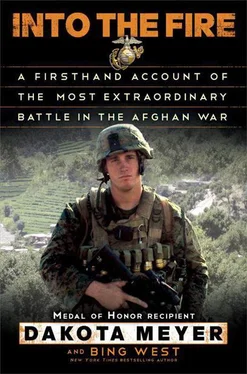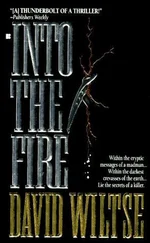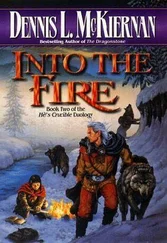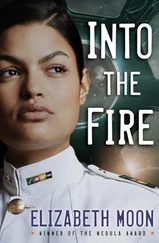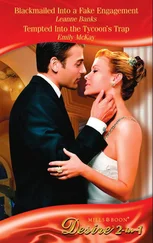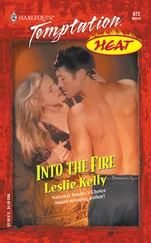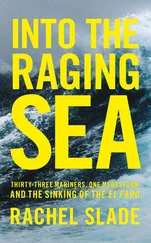I was going to miss the show.
If I could qualify as a sniper, however, it would improve my odds of getting into the fight. Sniper school isn’t about perching up in a palm tree and taking out some guy down the way, it’s about tactics and weapons. I wanted to learn more, but leaving the fire team wasn’t easy.
Kreitzer wasn’t happy that I wanted to try out.
“Meyer,” he said, “I spend four months shaping you up, and you repay me by leaving the team? That sucks.”
My instructor was Staff Sgt. Mike Skinta for the next eighty exhausting days, starting with learning heightened powers of observation. We had to map terrain and pick out hidden objects in the distance with our spotting scopes. The goal was to make us see needles in haystacks, move quietly and invisibly, and estimate long distances down to a few feet.
We spent weeks shooting; hitting difficult targets became second nature. You have to squeeze the trigger so evenly that you don’t anticipate the recoil and throw the shot off.
* * *
Sniper school provided the finest training of my career. The Marine Corps emphasizes marksmanship. Every Marine is a rifleman. It makes no difference what rank you are or how sophisticated your job is. Marine Gen. Jim Jones was the Supreme Allied Commander in Europe and served as President Obama’s first national security advisor. Even in those prestigious top jobs, he still signed his emails as “Rifleman.”
The Marines were generally acknowledged as having the finest sniper training program. In the Corps, if you qualified as a sniper, you received a special “military occupational specialty”—0317. I didn’t know if I could achieve that distinction, though. The attrition rate in sniper school was close to 50 percent.
Outside military circles, the word sniper holds a mystique. People ask only one question of a sniper: “How many men have you killed?”
On one level, that sounds reasonable. It’s like asking a baseball player how many home runs he has hit. The Finnish sniper Simo Hayha held the world record. During the winter war of 1939-40, he killed more than five hundred Russian soldiers. He was called “The White Death” because his white camouflage uniform blended into the snow. Other snipers, too, had astonishing numbers of kills. In World War I, a platoon of South Africans, recruited from big game hunters, averaged 125 kills per man. In Vietnam, Marine Sgt. Carlos Hathcock killed ninety-three of the enemy. In Iraq, Chris Kyle, a SEAL, recorded 160 kills.
I quickly learned, though, that asking in sniper school about kills was the surest way to anger an instructor. Nine times out of ten, the poor bastard seen in a sniper’s scope never knew he was about to die. Taking the shot that killed a man was only one small aspect of being a sniper.
“We don’t judge each other based on the number of kills,” Staff Sgt. Skinta, my instructor, told me. “How many enemy you shoot depends on luck—on whether you’re assigned to a hot or a cold battlefield. The most respected snipers are those who plan the most thorough mission.”
We beginners learned over the next eighty days what the word thorough meant. The instruction started with the basic power of observation, studying terrain and movement at near and far distances, then providing sketches of the land, its key features and its occupants. It was Kim’s Game on steroids—you stare at a complex set of objects for a minute and then from memory produce an accurate sketch. In sniper school, we had to pick out ten hidden objects with our M49 spotting scopes.
Next came complex field navigation, where you are dumped out at night in the middle of nowhere with a map, a compass, and a grid destination, with instructors driving the roads trying to catch you. Good luck puzzling out where you are and selecting a route that will get you to the end point in time.
After that, we practiced estimating (without instruments) distances up to a mile. Out to half a mile, we had to be able to judge within one hundred meters the distance to a man standing erect. Our academics consisted of ballistic physics, target assessment, artillery and mortar calls for fire, intelligence assessment, weapon systems, and mission planning.
With over a hundred sniper teams in the Marine Corps, standard sets of weapons were required. You couldn’t have each sniper choosing his personal rifle and cartridge. I enjoyed reading shooting magazines, but most of that gear was for wealthy civilians, not us corporals. Small differences in machine precision counted for far less than individual discipline.
The M40-A3 was our 16.5-pound sniper rifle, equipped with an adjustable cheek rest, a heavy twenty-four-inch barrel, and a bipod stand. The 7.62-millimeter (.308) rifle, based on the Remington 700 short action, fired the M118LR 7.62x51 HPBT military-only cartridge that retained supersonic speed out to nine hundred meters. In addition, we used the standard infantry M4 5.56-millimeter rifle and the monster M107 Barrett .50-caliber.
Our instructors talked about targets they had hit only as a way of illustrating a technique or a lesson. Skinta told of one encounter that had an ironic twist. On one of his tours in Iraq, he was on a patrol hunting for an enemy sniper. At dusk on the third day, the patrol moved to an abandoned water purification building to get some rest. Skinta was on the second floor when the outside wall was peppered by an RPK (machine gun), followed by a few high-caliber rifle shots. Through the scope, his spotter saw a sniper nine hundred meters away. He was shooting with a Russian 7.62 Mosin-Nagant rifle that had a superb pedigree among snipers.
Skinta’s first shot was so low that it kicked up dirt in front of the enemy sniper. Yet the sniper didn’t bother to duck, probably thinking it was a stray round from the standard Marine 5.56-millimeter M4. Skinta’s next shot hit the man in the chest. He died because he didn’t realize an American sniper was shooting at him. (For your information: In three combat tours, Skinta tallied over thirty kills. I learned that only by talking with a corporal who worked in administration, five years after I first met Skinta.)
The hardest task for me was the close-in stalk against an alert prey: A truck is parked in the middle of a field, guarded by two instructors with binoculars. You make a ghillie suit from burlap and twigs and grasses at all angles. A man standing up looks like a mass of seaweed.
Lying down, that same man blends into the ground. The test required each of us to sneak a thousand meters across the field, take two shots at targets, and get close enough to copy down the letters stenciled on the side of the truck, all without being seen.
Trying to get that right took me a week of training on my stomach, moving with the ants among stalks of grass and brambles. I learned to observe the enemy by “burning through”—staring intently until you can see through the blades of grass without raising your head an inch. When exam day came, I inched undetected across the thousand meters and simulated my kill shots. That wasn’t bad for a guy built like a refrigerator.
We were told that as a sniper, you never let anyone else, regardless of rank, make off-the-cuff changes to your plan. You plan the mission, and you execute it. You’re in charge of your team. The goal is to know every aspect of your job so well that you have complete confidence.
Many of the missions we practiced were counter-IED. We spent hours learning how to stake out long stretches of road, waiting for someone to come along with a shovel and a sack of explosives. Skinta told us about a sniper team in over-watch in a half-constructed building in Ramadi in 2004. It was a warm, dull day and after several hours, they dozed off and never awakened. Insurgents sneaked up and shot all four Marines in the head. They left with the high-powered M48-A3 and its excellent Schmidt & Bender scope. Over the course of the next year, they allegedly killed two more Americans before a Marine sniper took them out and recovered the rifle. Skinta hammered home his message: know every aspect of your job, and never, never let down your guard. If you slack off or take things for granted, you die.
Читать дальше
